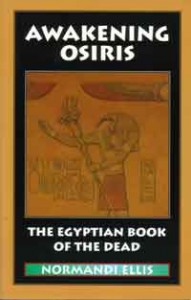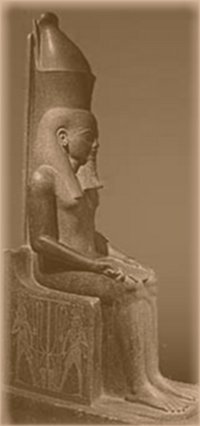I´ll be kicking off my first post here with a topic that I think is important to Kemetic practitioners of all stripes and that I wanted to take a closer look at besides the general definition that we all are familiar with (and if you´re not familiar with this concept, go ahead and check out this link). I´ll be using information gained from reading Maulana Karenga´s epic tome on Maat: Maat, The Moral Ideal in Ancient Egypt.
What do I mean by moral ideal? This would be a set of moral/aesthetic assertions that provide a model of the Ancient Egyptian conception of the moral or ethical. Another way to interpret this would be the moral ideal as a theme. A theme won´t exactly tell us “do X in order to be morally correct,” but it will give us a point of orientation. This is different from an ideal norm that provides us with concrete rules, “If I do X, I will be morally superior;” our moral progress is measured not by complying with norms but by measuring the degree of how much we comport ourselves to mirror what we consider the ideal (often we describe Maat as justice, equality, rightness, etc.). In other words, one can be more just or less just, but there is no obvious action that we must do in order to be considered just, no list of what to do and what not to do. We instead have a framework of possibility, from which a diversity of actions all lead to a moral ideal.
It seems a bit…well, slippery, doesn´t it? Well, one of the features of Kemetic thought that I love so much is polyvalent logic: the ability to hold two (or more) seemingly conflicting truths as true at the same time. For example, we have four creation stories, and they´re all true, even though they describe Zep Tepi (the beginning) as going down in different ways. An ideal theme is similar in that it´s a polysemic category and concept; that is, it stimulates different conceptions, thoughts, and interpretations, leaving the actual practice of Maat to be highly subjective, with a conceptual elasticity that lacks preciseness.
Let´s take a look into the history of Maat. Its etymology suggests an evolution from the physical concept of evenness, straightness, levelness, correctness; to a general concept of rightness including the ontological and ethical sense of truth, justice, etc.; basically the typical definition that I mentioned above. We first see it appear when time itself began, as divine or cosmic order established at the time of creation. Maat also serves as nourishment to the netjeru (or, divine powers). It is a system whose goal is to defend against chaos in nature and society. It is the foundation and order of the world that is expressed in four basic areas, according to Théophile Obenga:
(1) The universal domain in which Maat is “leTout ordonné,” the totality of ordered existence, and represents things in harmony and in place;
(2) The political domain in which Maat is justice and in opposition to injustice;
(3) The social domain in which the focus is on right relations and duty in the context of community and;
(4) The personal domain in which following the rules and principles of Maat, ´is to realize concretely the universal order in oneself; to live in harmony with the ordered whole´” (1990, 158)
As it is a divinely established order, “it underlies and governs all aspects of existence, somewhat akin to the western notion of natural law” (Allen 1988, 26). It is also a life-generating principle and force, as we see here in the Coffin Texts, as Nun, the primeval waters says to Atum (the Creator): “Kiss your daughter Maat. Put her to your nose that your heart may live” (CT I, 35).
What is man´s place in this order? Frankfort (an Egyptologist) thinks that one´s success is proved by how frictionless their integration is into this divine order. This makes it a social question, and is answered not by one´s own moral conscience, but by their reputation in their community. This doesn´t mean that one doesn´t need a conscience, but that conscience is a relational concept and thus depends on both what one´s moral community thinks and on what one thinks of one´s self based on this evaluation by significant others. This is a reason why Kemet evolved as a communitarian society, focused not on individuals but on relationships, reciprocal obligations and related rightful expectations (Gyekye 1987, 155; Assmann 2002, 133-34). One´s opposition to integration with society and their practice of isfet (wrongdoing, evil, disorder, the opposite of Maat) ensures their destruction, because isfet is “the abomination of God” and “that which is perennially defeated in the order of the universe” (Frankfort 1961, 75).
Some good examples of an ideal conception of what was considered the moral ideal can be found in the Declarations of Innocence . These Declarations are considered a summary of the major ethical concerns of Kemet which appear in standard form in the New Kingdom in The Book of Coming Forth by Day (Budge 1898; Maystre 1937; Allen 1974; Saleh 1984; Faulkner 1985; Dondelinger 1987). We may also take from the Sebait (or Instructions) and the Declarations of Virtues found in autobiographies, but I will save that for another post.
What are some ways that you contribute to your community? Do you think others see you as one who does Maat? What are other ways that you do Maat?





